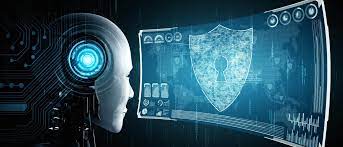The Evolution of Smart Grid Technology
Energy distribution has come a long way since its early days. In the past, centralized power plants generated electricity, which was then distributed to homes and businesses through a one-way system. This traditional model allowed for efficient delivery of power but lacked flexibility and resilience in the face of disruptions or power outages.
As technology advanced, the concept of a two-way energy distribution system emerged. This modern approach not only focuses on delivering electricity from power plants to consumers but also enables the flow of energy in the opposite direction. This two-way system allows for better integration of renewable energy sources, more efficient energy management, and increased reliability in energy distribution.
Early Concepts of Grid Modernization
Grid modernization has long been a topic of interest, stemming from the need to enhance the efficiency and resilience of energy distribution networks. In the early stages of grid modernization, the focus was primarily on implementing advanced metering infrastructure (AMI) to enable two-way communication between utilities and consumers. This innovation allowed for real-time data monitoring and improved load management strategies, paving the way for more flexible and dynamic grid operations.
In addition to AMI, the early concepts of grid modernization also involved the integration of smart grid technologies such as automated switching, fault detection, and voltage regulation systems. These advancements aimed to enhance grid reliability and enable quicker response to disruptions, ultimately leading to a more stable and secure energy infrastructure. The adoption of these innovative solutions laid the groundwork for further developments in grid modernization, setting the stage for the integration of renewable energy sources and the evolution towards a more sustainable energy future.
Integration of Renewable Energy Sources
As we progress into the 21st century, the integration of renewable energy sources into our existing grid infrastructure has become a top priority for many nations across the globe. The growing concern over climate change and the finite nature of traditional fossil fuels have underscored the importance of transitioning towards cleaner and more sustainable sources of energy. This shift towards renewables is not only a response to environmental challenges but also a strategic move to diversify our energy mix and enhance energy security.
Renewable energy sources such as solar, wind, hydro, and geothermal power offer a promising solution to reduce greenhouse gas emissions and mitigate the negative impacts of climate change. The variability and intermittency of these sources, however, present technological and logistical challenges that need to be addressed. Advancements in energy storage technologies, smart grid systems, and grid modernization efforts are key components in effectively integrating renewable energy sources into our energy systems. By embracing these innovations and fostering collaboration between various stakeholders, we can build a more resilient and sustainable energy infrastructure for future generations.
What is the evolution of energy distribution?
The evolution of energy distribution has seen a shift from centralized power plants to a more decentralized and diversified system, with an increasing focus on renewable energy sources.
What are some early concepts of grid modernization?
Early concepts of grid modernization include the development of smart grids, energy storage technologies, and advanced communication systems to improve the efficiency and reliability of the grid.
How are renewable energy sources integrated into the energy grid?
Renewable energy sources are integrated into the energy grid through the use of technologies such as solar panels, wind turbines, and hydroelectric power plants, which generate electricity from natural resources like sunlight, wind, and water.
What are some benefits of integrating renewable energy sources into the grid?
Some benefits of integrating renewable energy sources into the grid include reduced greenhouse gas emissions, improved energy security, and lower energy costs in the long run.
Are there any challenges to integrating renewable energy sources into the grid?
Yes, some challenges to integrating renewable energy sources into the grid include intermittency of sources like solar and wind, grid infrastructure constraints, and the need for energy storage solutions.






